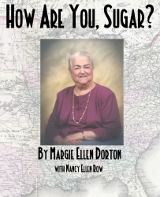Sunday Book Review: “The Tooth Mouse,” “Mimi’s Village and How Basic Health Care Transformed It” & “A Strange Place to Call Home: The World’s Most Dangerous Habitats & the Animals That Call Them Home”
And now, for the kids’ book reviews:
* “The Tooth Mouse,” written by Susan Hood and illustrated by Janice Nadeau, is a charming book. (Kids Can Press, 2012, $16.95, unpaged.) The illustrator used pencils and watercolors and went primarily with pinks, browns and greens for the color scheme. Her work gives the book a soft, inviting look. Reminded me of the Madeleine books, a bit. Oui! Sweet tale about the Tooth Mouse, who is the French equivalent of the Tooth Fairy. Nice touch: Go to the back of the book and you’ll find a list of “tooth traditions from around the world.” (Greece: Tooth Mouse and Pig. Sri Lanka: Squirrel. Chile: A parent.) (Wait… a parent?) “It’s the Tooth Mouse! Le Petite Souris!” My kids were delighted by this one.
* “A Strange Place to Call Home: The World’s Most Dangerous Habitats & the Animals That Call Them Home,” was written by poet Marilyn Singer and illustrated by Caldecott Medalist Ed Young. (Chronicle Kids, $16.99, 2012, unpaged.) Oh, I like collages. And I love poetry, too. So this one jumped right up into my hands. (My kids liked it, too.) Fourteen critters, including Humboldt penguins, flamingos and mountain goats, keep on going in the strange places where they reside. Fun poems, and delightful art.
On the Rocks
limpets
“In the intertidal zone,
where waves are prone
to be forceful,
where the waters rush
to batter, buffet, crush,
dislodge, displace, fling,
a limpet is resourceful.
Its fine construction
employs suction.
In other words, its thing
is mightily to cling.”
* “Mimi’s Village and How Basic Health Care Transformed it,” by Katie Smith Milway, illustrated by Eugenie Fernandes, is a new publication from Citizen Kid. (Kids Can Press, $18.95, 2012, 32 pages.) As a rule, I dislike “message” books. (Why bullying is bad; a lesson, or six, about “kindness,” etc.) My son calls those ones, “Books that grown-ups like, but not kids.” (The Berenstain Bears, I am sad to say, fall into this category and are beloved by educators everywhere.) I am pleased to report that “Mimi’s Village,” while it has a message to send, is not a “message” book. Mimi lives in West Kenya, and her little sister, Nakkissi, gets sick from dirty water that Mimi let her drink. The family looks for help, but will it arrive in time? This would be a useful book in the classroom. The illustrations and story are bright and engaging. The glossary includes words from Swahili and Luyha dialects. I loved that the author included a whole section in the back with information on village health care workers, a breakdown of reasons why health care is critical, and a long list of websites where aid can be given. Nice job on this one.










